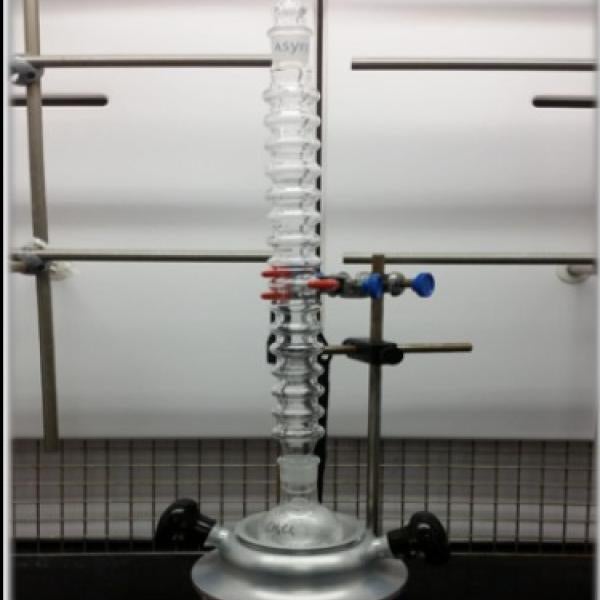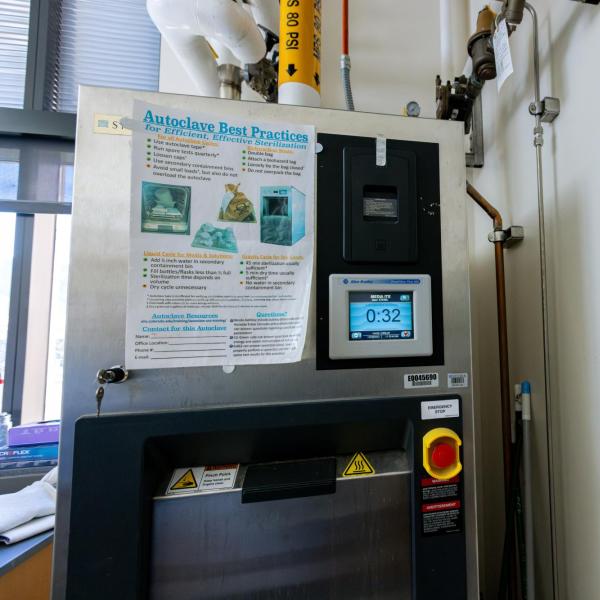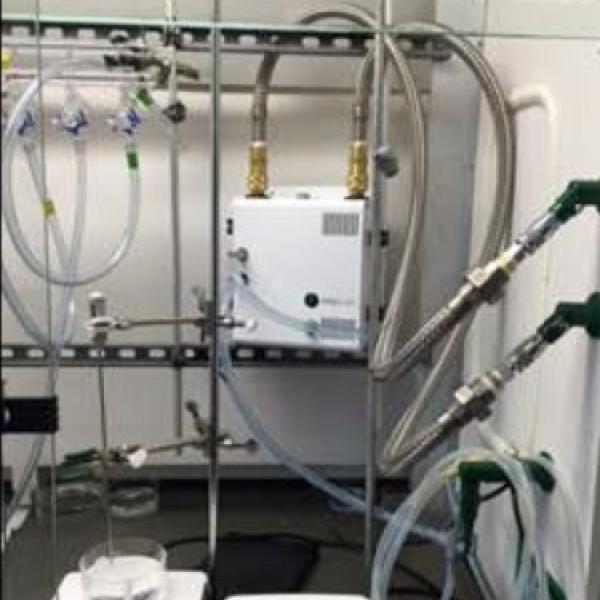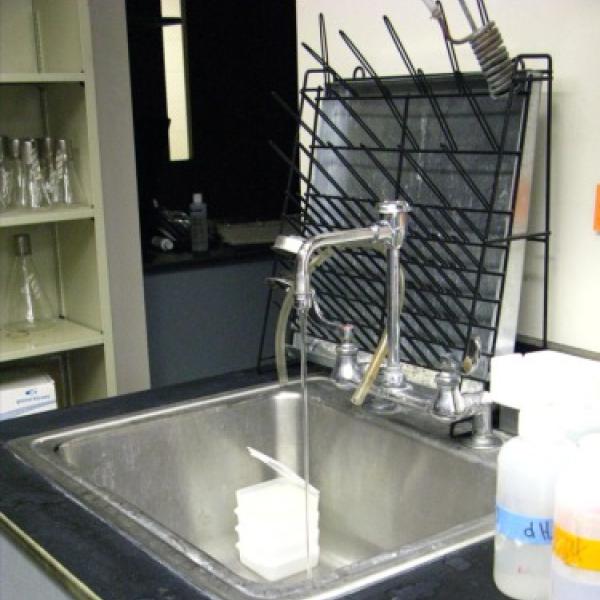Lab Efforts | Water
Waterless Condensers
In many instances, labs can use waterless condensers instead of traditional water-based condensers for synthesis reactions in chemistry. The exception is for low-boiling solvents. Waterless condensers help labs conserve water and protect their assets from flooding, like when a tube disconnects during water-cooled synthesis. They are also easier to set up than a condenser that uses water.
See two examples of waterless condensers below. CU Green Labs has previously allowed labs to try free waterless condensers of various sizes. Reach out to CU Green Labs to check availability.
Water Purification
Labs with access to a water purification system should consider whether your lab procedure or application requires purified water. If it is not needed, do not use hyper-pure water. Producing purified water requires excess energy and water. Labs use different types of purified water, including distilled, reverse osmosis, ultrafiltration and more.
Here are a few references to help you assess water purification practices in your laboratory:
- Lab Manager - Make Every Drop Count
- Laboratories for the 21st Century: Best Practices - Water Efficiency Guide for Laboratories
Water Misers for Autoclaves
Autoclaves are large water consumers. Without a water miser, an autoclave can consume 45-50 gallons of water per minute, 24 hours a day, seven days a week. On non-retrofitted autoclaves, cold single-use tap water flows continuously down the drain below an autoclave just in case the hot condensate is flushed down the drain too. The purpose of the tap water is to cool the condensate.
A water miser is a tank with a temperature probe retrofitted to an autoclave. Hot condensate is flushed from the autoclave into the water miser and then mixed with cold tap water to bring the overall temperature of the mixture low enough to be safely released down the drain. A water miser prevents the continuous flow of cold water down the drain, resulting in up to a 99% reduction in water use.
Most autoclaves at CU Boulder are retrofitted with water misers to conserve water. If you hear the sound of draining water from your autoclave, even when the autoclave is off, contact Facilities Management to make sure your water miser is still working properly, helping our campus conserve our precious water resources.
Use Processed Chilled Water (PCW)
Some buildings on the CU Boulder campus have a Processed Chilled Water (PCW) system, a byproduct of the building's heating and cooling system. PCW is a closed-loop system. The water within the system is pumped around the building and maintains a relatively stable water temperature.
Labs can use PCW to cool equipment and reactions when the required connections to the PCW system are available. For example, some fume hoods have PCW hook-ups. A building's PCW system is under high pressure, so ensure the right equipment is in place to access this water source. Water cannot be removed from the PCW system. Any connection to it must be an output with an input.
Below is a photo of a recirculator system called an eVap, connected to the PCW in JSCBB and used to cool a standard water-cooled synthesis reaction inside a fume hood. The eVap device provides cooled recirculated water to a condenser (or multiple condensers) using a heat exchanger and the building's PCW. This saves water and reduces the risk of flooding in the lab.
If you'd like to explore using PCW in your lab, contact CU Green Labs!
Low Flow Aerators for Lab Sinks
Does the water from your lab's sink come out too quickly, splashing inside the basin and the objects surrounding the sink? Reducing the water flow can save significant water for labs. Scientists also benefit from reduced splashing of glassware and other items drying next to the sink.
Affixing a low-flow aerator to your sink's faucet can reduce water flow to 1 or 1.5 gallons per minute instead of 2 or 3 gallons per minute. Using a low-flow aerator on a splashy sink can reduce water consumption by 50%. Contact CU Green Labs to see if a low-flow aerator might work for your lab.






